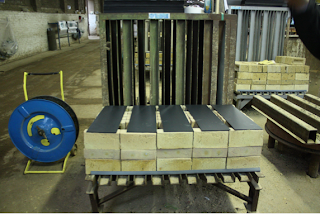From today's Metro on p27:
Metro, Wednesday 22 May 2013, p27
Some people collect stamps, others coins and trainspotters have to accumulate engine numbers – but have you ever heard of anyone collecting bricks?
For over two decades, Neil Brittlebank has travelled the length and breadth of Britain amassing a batch of rare bricks.
He even convinced his daughter, Gail, to carry a brick she found while on holiday in France around in her backpack so he could add it to his collection.
And each of his 1,000 blocks has a story to tell, says the 78-year-old.
‘I just think it’s a shame not to preserve them, they are part of our history,’ said Mr Brittlebank, whose oldest brick dates back to 1892.
He scours demolition sites, disused buildings and hedgerows to seek out bricks for his pile.
‘I have one which is rather rare, in that it should say Ackrington Iron on it. But what it actually says is Ackrington Nori,’ said the father-of-two.
The retired mine safety worker’s love of bricks started in 1990, when he heard his old pit, Lofthouse Colliery, in west Yorkshire, was going to be demolished to make way for a country park.
‘I could see all these old bricks lying around and asked a man working on the redevelopment what was going to happen to them,’ said Mr Brittlebank.
‘He said they were going to be crushed and I thought it was a shame, so I asked if I could have some – the collection started from there,’ he said.
Rather than clog up his home in East Ardsley, near Leeds, with his collection, Mr Brittlebank has used the bricks to build a garden path and driveway.
At least it means long-suffering wife, Maureen, doesn’t have to clean his haul.
But if she objects to her husband’s obsession, it seems, some of their neighbours encourage it.
‘People leave them for me, sometimes,’ said Mr Brittlebank. ‘I open the door and find bricks on the doorstep.’














